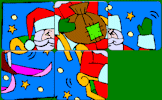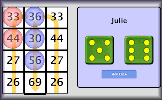
Time for some detective work!
A tray is to be made from a
special sheet of paper which is 30cm by 21cm.
Squares will be cut from each of the corners
of the paper and the edges folded up to form the tray.

What should be the size of the cut
out squares if the tray is to have the largest possible volume?

Suggestions
Use algebra, let the side of the cut out square be
x.
Use some scrap A4 paper to try out your ideas.
Use a spreadsheet to record your working.
Discuss your thoughts with someone else.
Draw a graph of your results.
Work systematically.
Results
Did you find the maximum volume of the tray?
You can claim a Transum virtual trophy if you got the correct answers:
At least
one of those answers is wrong. You can try again.
Check
Note that you do not have to get the answer right to prove you have done
a good investigation. Your teacher is the best person to give you feedback
on your work.
Answers
The solutions to this and other Transum puzzles,
exercises and activities are available here when you are signed in to your
Transum subscription account. If you do not yet have an account and you are
a teacher, tutor or parent you can apply for one by completing the form on
the Sign Up page.
A Transum subscription also gives you access to the
'Class Admin' student management system, downloadable worksheets, many more
teaching resources and opens up ad-free access to the Transum website for
you and your pupils.
Extension
Extend your investigation to include sheets of paper of different sizes.
What if the tray needed a lid?
Think about the surface area, the minimum volume or other shape trays.





